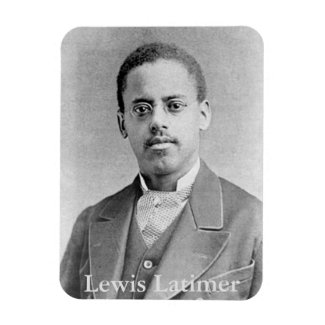Lewis Howard Latimer was born September 4, 1848 in Chelsea, Massachusetts to former slaves. As a teen, he joined the United States Navy to fight against slavery during the Civil War. After the war, he became an office assistant in a patent law firm. Upon learning that Latimer had the skills of a draftsman, which he taught himself from used books, he was promoted to junior draftsman at the patent law firm. Eventually, Latimer was promoted again to senior draftsman.
As a draftsman at the patent law firm, Latimer's job was to make technical drawings to submit with the patent applications of the firm's clients. His employment there put Latimer in place for the accomplishment he probably most known and remembered for. Latimer worked closely with Alexander Graham Bell, a client of the patent law firm, to produce the drawings for Bell's patent application of the telephone. Latimer had to work both quickly and accurately since both he and Bell knew there were other inventors trying to patent a device that would carry sound over wires. By submitting Bell's patent application just hours before a competitor, Latimer cemented Bell's place in history.
Latimer became an inventor in his own right. His first patent was an improved restroom compartment for trains. However, his major achievement as an inventor was an improvement on another invention, the light bulb. The filament in the first incandescent light bulbs did not last long enough for practical use. Latimer invented and patented an improved carbon filament that stayed lit long enough for the light bulb to be useful.
In his later years, Latimer went to work for Thomas Edison. With his knowledge of both patent law and electrical engineering, he helped Edison's company defend itself against lawsuits. While employed by Edison, Latimer also wrote a definitive book on incandescent lighting.
